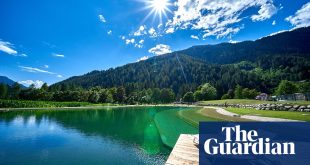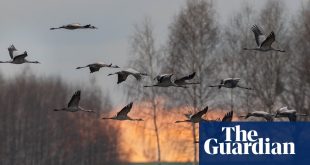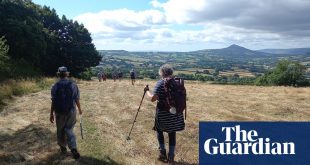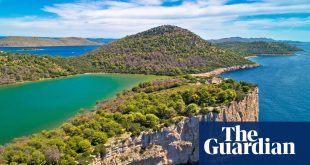Some walkers find coastal walks dull. Their main gripe is sameness: too blue, too green, too straight, too twee. Sometimes they say it’s not “real” enough, by which they mean they prefer the grot and slog of mud and mountains. I defy any of these people to walk from Seaton to Seatown and not admit they are, at least sometimes, completely wrong.
Here on the Devon-Dorset border drama abounds. For centuries, the constant assault of waves and wind has warped the land and kept cartographers in work. Between Seaton and Lyme Regis, a series of landslips produced a five-mile undercliff, a rocky shoulder of clefts and gullies. The largest slump, on Christmas Eve 1839, dragged down a portion of wheatfield, somehow sufficiently undamaged for harvest the following summer. Farmers tried to keep the land in use, particularly with sheep, but the uneven terrain made things impractical and, after eventual abandonment, the place went wild – truly wild.
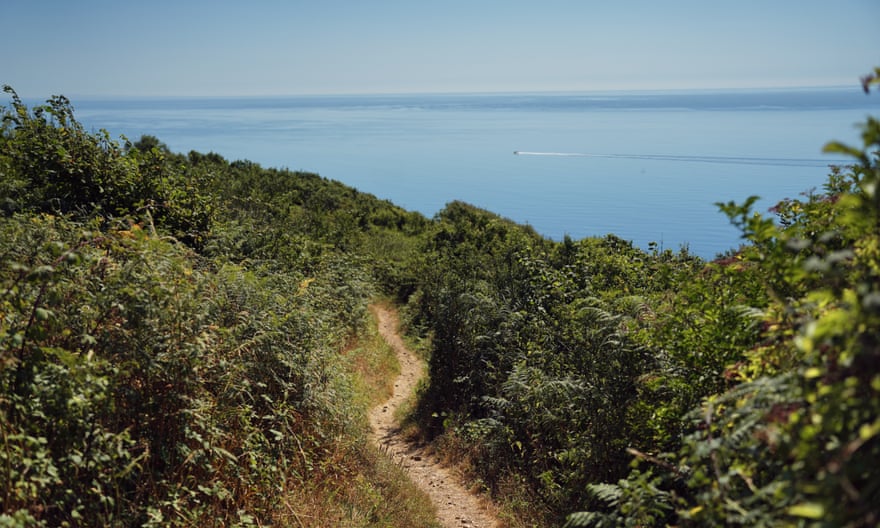
Freed of the yoke of man, the undercliff teems with life; rainforest is a frequent comparison and not hyperbolic. It’s the density that invites the parallel. Apart from the narrow path, every patch of land is alive, leaves of every shape and colour, creeping and clambering. For the first half, the battle for ground is won by the little guys. The primroses in ditches, the dog’s mercury in craters, the wood violet, the sorrel, the arum. My favourite is wild carrot, which dusts the path with white flowers so delicate they might melt. I stop to pick one up, fingering the soft petals. And I realise I haven’t seen or heard the sea in an hour. The crashing waves, probably no more than 30 metres from me at any time, are smothered by a wall of green.
About halfway along, the scene changes a little, the air becoming a little freer. Light filters through beech leaves, each glowing majestic. Jays and nuthatches chatter and chase between field maples and ash and the odd gnarled oak. A female blackbird zooms upwards from the floor, drawing my eye. I trip on a thick hoop of root, trace it along the ground and see it twist into a vine, up and around a trunk, winding round and round towards the crown – and there is the blackbird again, singing merrily.
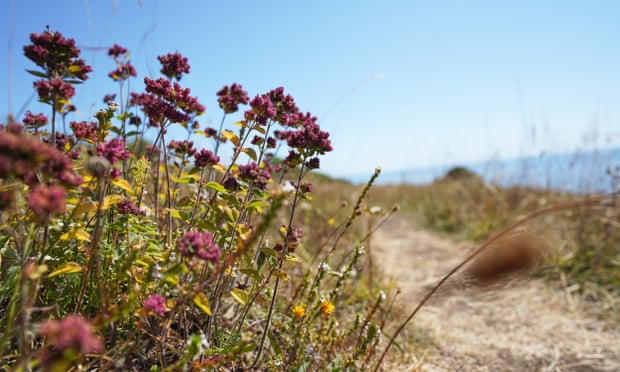
Werner Herzog once said of the jungle, “The trees here are in misery, the birds are in misery. I don’t think they sing, they just screech in pain.” At that moment, I had never thought him more silly. Life is a carnival here.
The undercliff ends, suddenly, at Lyme Regis. But the drama continues. The great green curtain pulls back, revealing a shining sea, brilliant white. The sky is white, too, though there are no clouds. There is too much light for the elements to hold. It just bounces off. The wind drops and, sweating now, I slalom through the town’s main street, all coffee and scones in midmorning, before reaching the sweeping stone harbour, the Cobb.

The lampposts here are adorned with coils of ammonites. Most things are in Lyme Regis, the celebrity town of the Jurassic Coast, England’s only natural Unesco world heritage site. Around 200m years ago, this land was on the same latitude as North Africa, and the warm sea supported a rich marine ecosystem.
When the animals died, they dropped into an anaerobic sludge and were buried by the mud that flowed from the rivers. Down they went, those dead ammonites and belemnites and ichthyosaurs, deeper and deeper, until they compacted into stone. They lay three miles below the surface of the water, until Italy smashed blindly into southern Europe; the shockwaves produced the Alps and, further north, raised the beds of the dead up to the cliffs of the Jurassic Coast. Now, as the constant thrash of waves batters the cliffs, the old fossils slough off. Children can chisel a piece of rock and hold in their hand the remains of creatures that died aeons before humankind existed. It’s quite an extraordinary thing.
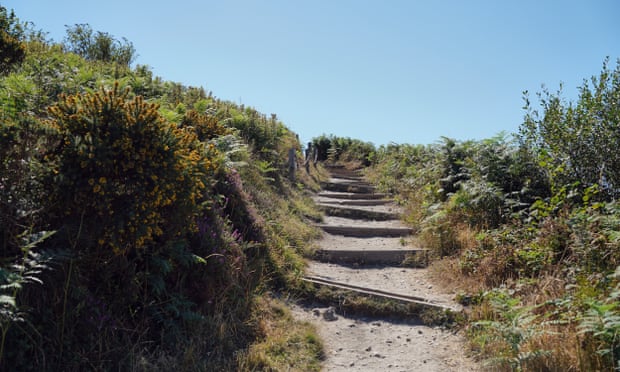
I climb out of Lyme Regis and roll over the folding valleys, down to the charming coloured cottages of Charmouth and back up the other side to see a large hill beating its chest, issuing a challenge. I check my map to confirm it is Golden Cap – the highest point on the south coast. The way up is typical South West Coast Path: stiff breeze, flinty path, steps braced in wood, fields lined with bracken. As I climb, I pass through a herd of dozing cows, the stupendous view back down the hill utterly wasted on them. It’s steep enough to steal the breath, and hard enough on the feet on the way down to have them singing.
When finally I reach Seatown, I take my boots off, walk straight down to the water, and stride into the cold, looking out to the waves ambling in from the flat horizon. I stand on the little soft pebbles, massaging them between my aching toes. After a minute or so of bliss, I go numb, turn around, and walk the few metres to the pub for a little more.
Google map of the route
Allow Google Maps content?
This article includes content provided by Google Maps. We ask for your permission before anything is loaded, as they may be using cookies and other technologies. To view this content, click ‘Allow and continue’.
Start Seaton
Finish Seatown
Distance 14 miles
Time 7 hours
Total ascent 884 metres
Difficulty moderate
The pub
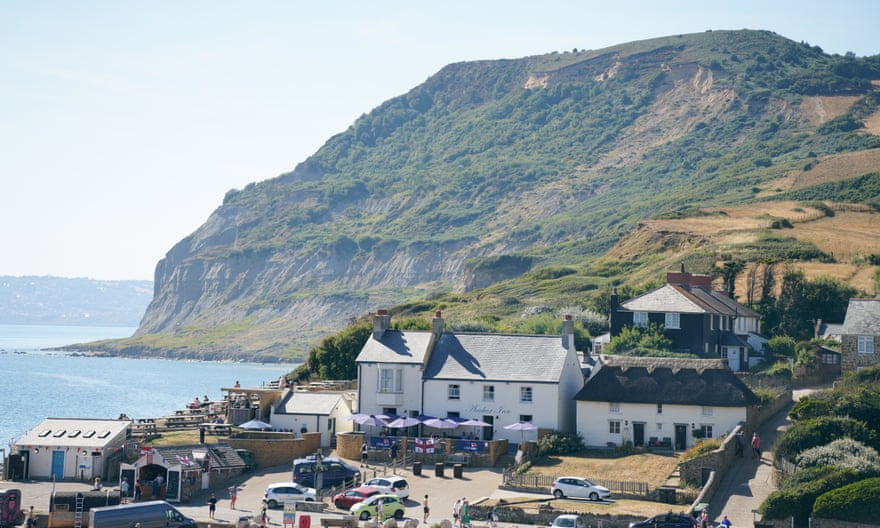
Thank goodness the Anchor Inn is hard to get to. Golden Cap daunts its share of visitors, and the narrow road down from Chideock gums up quickly. Without those guardians, the place would be overrun. Surely no pub better flaunts its location. It simply lolls at the mouth of a golden cove.
Amid hungry walkers and happy families, friendly dogs and children with salt in their hair, I request a table – they don’t take bookings in the summer months. “Are you OK to sit outside?” I am asked, utterly redundantly. The terrace looks out to the water and I sit hypnotised until another waiter’s polite enquiry startles me. I recover my bearings and order the local Palmers Gold, brewed down the road in Bridport since 1794. The man on the next table congratulates me on my choice and, after we exchange cheers, I realise why – it’s the perfect beer after a long walk, a smooth, rich reward.
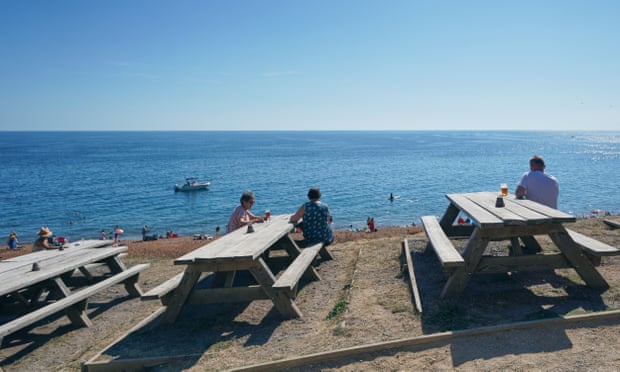
The same man suggests I choose the ploughman’s for lunch. He’s had it every year since he started coming here five years ago. But, as a veggie, I choose the aubergine and hummus baguette. That’s excellent, too – fresh as well as filling. If I come back, I might try the pizza shack on the pebbles: the pub’s old boathouse has been redone as the Seatown Slice for those who can’t fit inside.
After feeding, I pop up to the benches on the sloped cliff garden for another Palmers. A beer garden in London can mean metal tables and chairs in a car park. Here, the foxtail grass dances in the breeze, the clouds tickle the tip of Golden Cap, the waves stupefy with calm. As I drain my pint I check my phone and realise I have missed the bus from Chideock. I’ve never been happier to waste an hour.
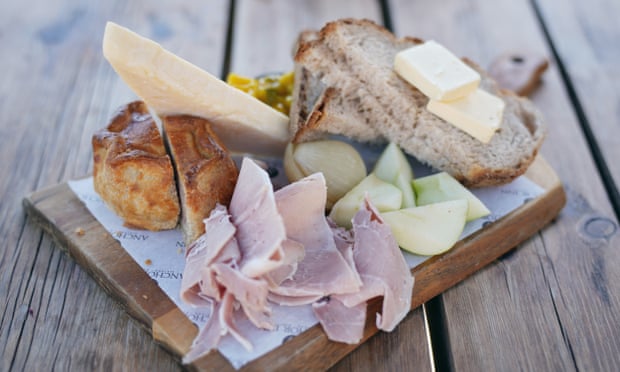
The rooms
Each room at the Anchor Inn has a kingsize bed, an en suite and a sea view. But book well in advance: there are only three of them. If you’re not in luck, there’s the Golden Cap Holiday Park, less than a minute’s walk away, with caravans, lodges and the like.
Doubles from £170 B&B, palmersbrewery.com
 Top Naija News: Nigerian News, Breaking News Nigeria and World News Top Naija News is a daily news publication in Nigeria, delivering the latest breaking news in Nigeria and around the world.
Top Naija News: Nigerian News, Breaking News Nigeria and World News Top Naija News is a daily news publication in Nigeria, delivering the latest breaking news in Nigeria and around the world.
